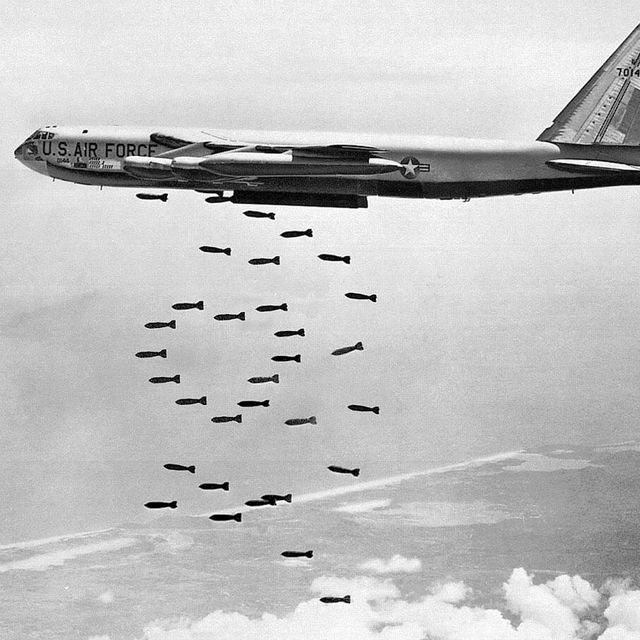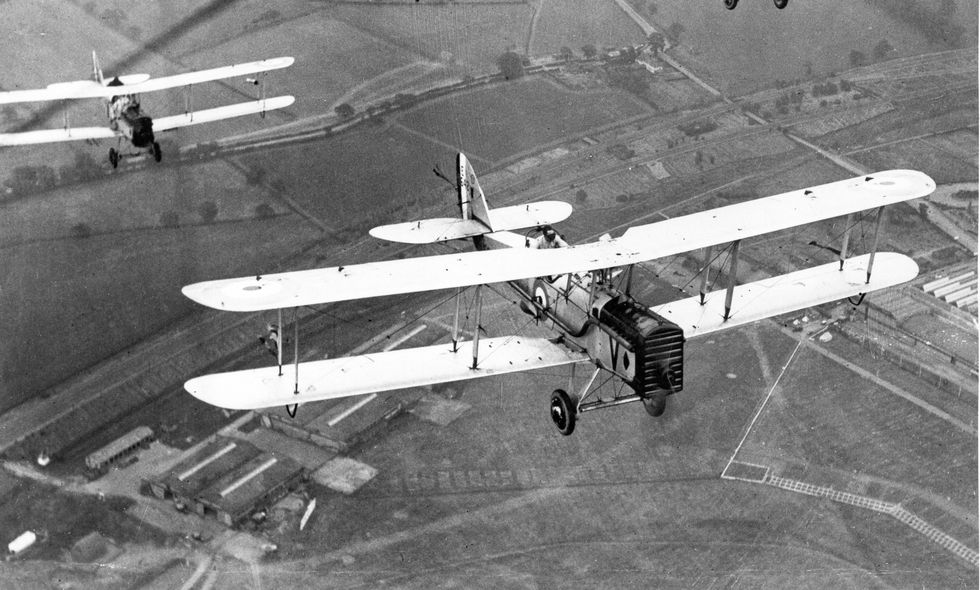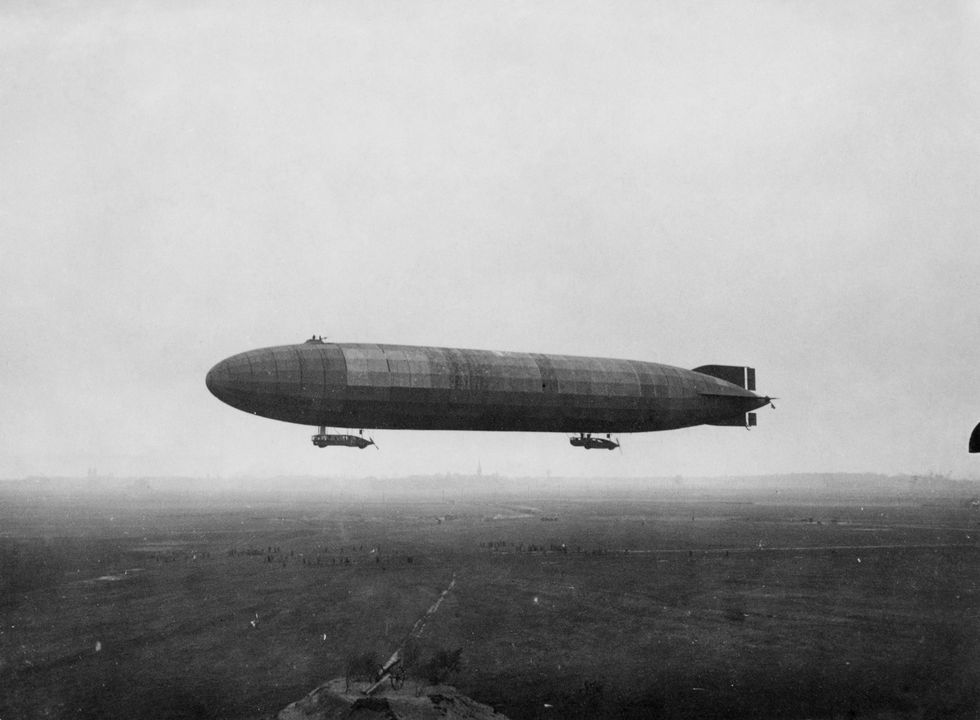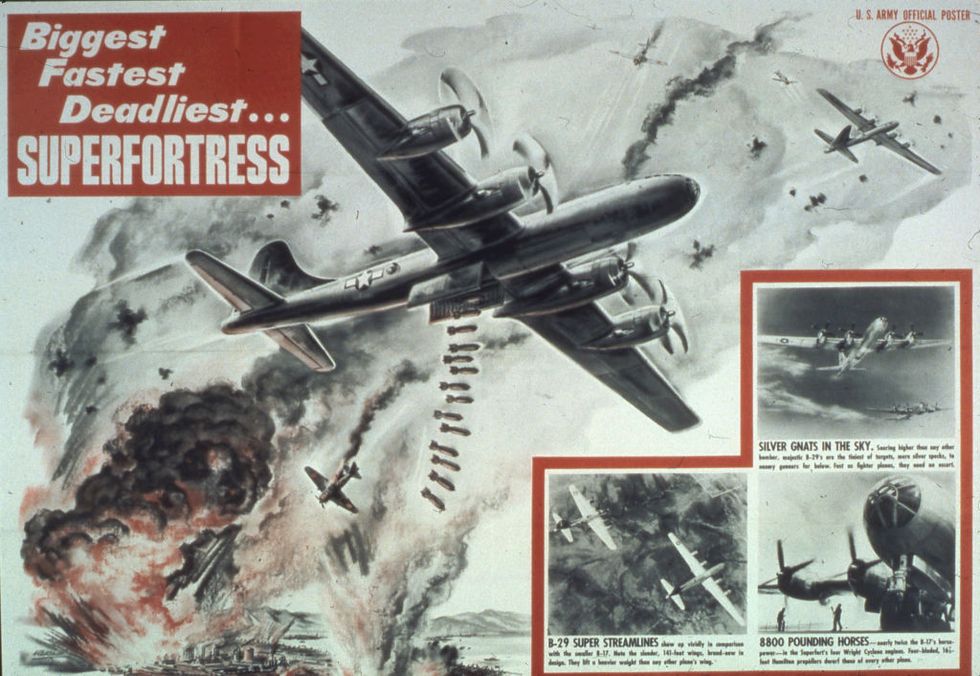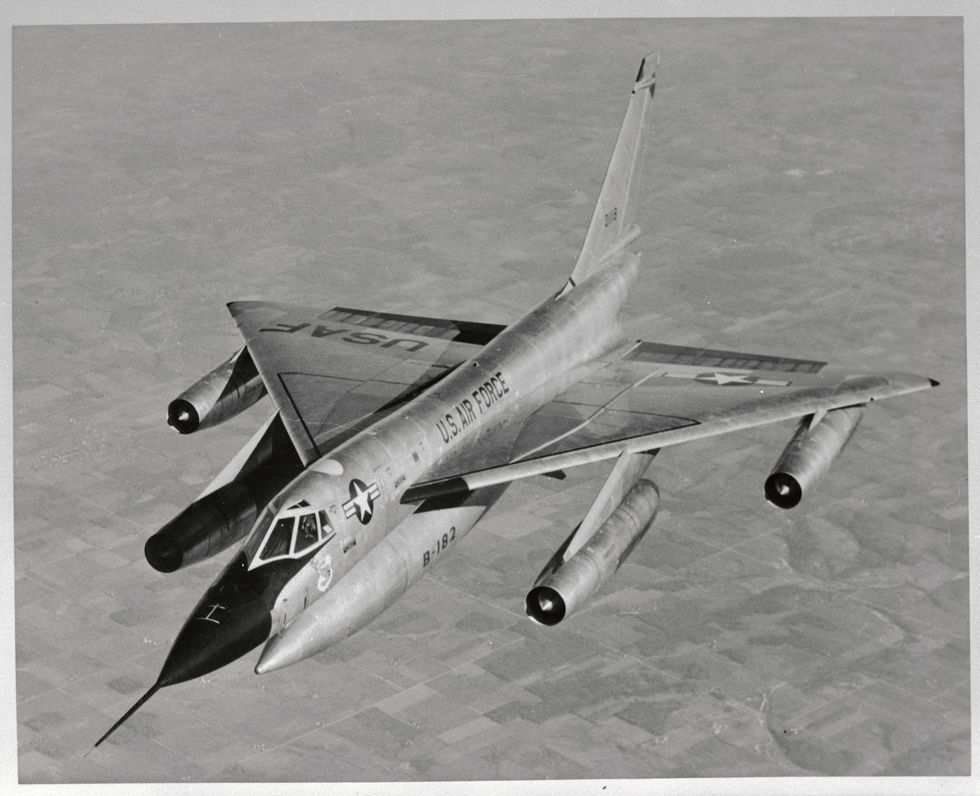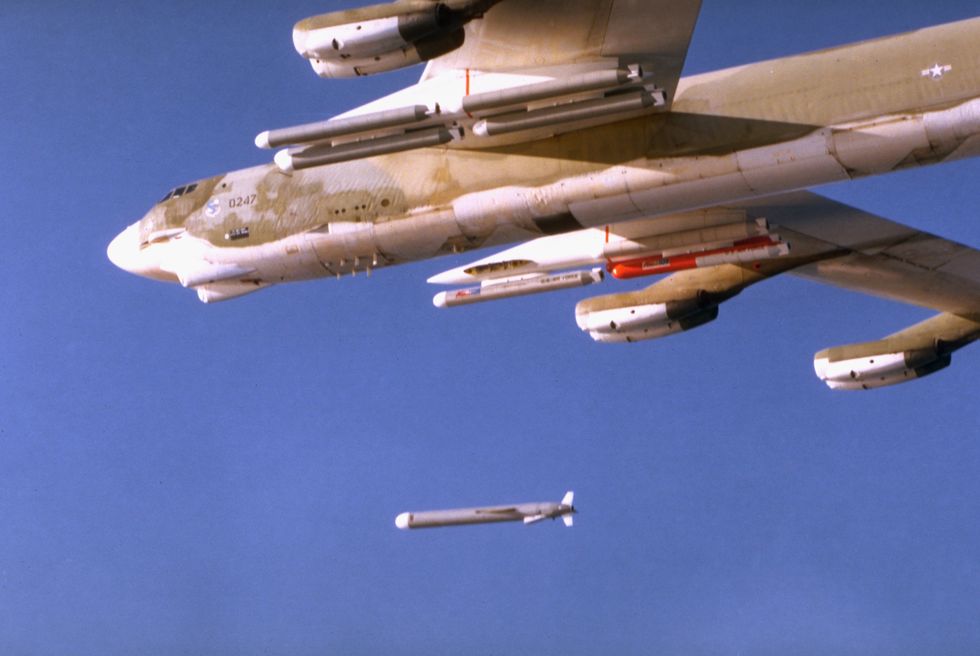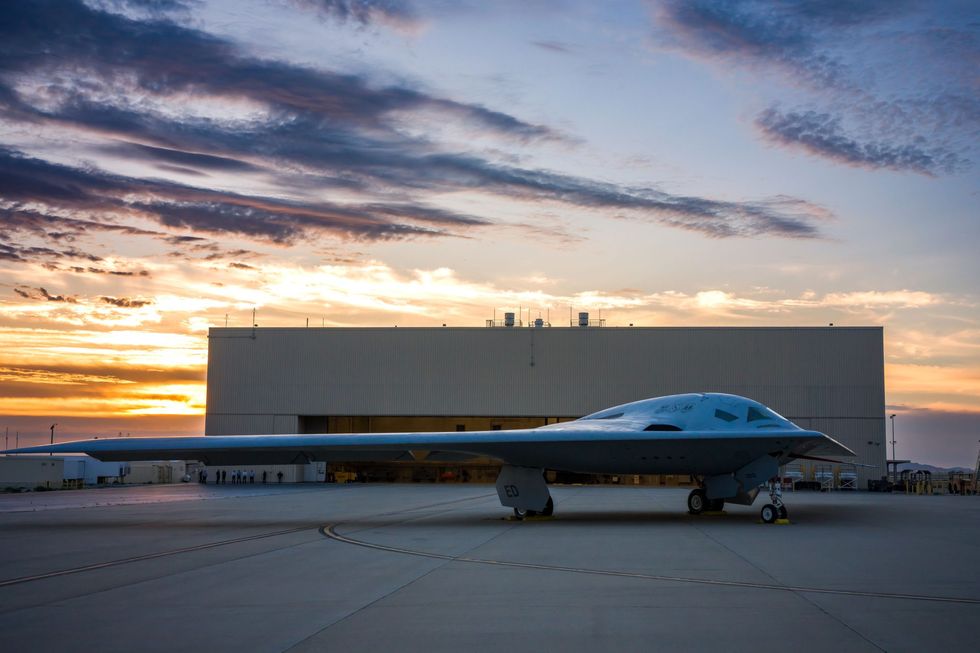Capable of crossing entire oceans, evading enemy defenses, and then striking a target so precisely it can place 1,000 pounds of explosives through an enemy’s window, the bomber is one of the most powerful and enduring weapons in modern warfare.
While the mission is the same, it wasn’t always like this: today’s bombers, like the highly secretive B-21 Raider, are the realization of a century-old dream. The fulfillment of this dream, however, comes with a steep price that few countries can afford.
This is the history of the bomber.
The Dawn of the Bomber
The first use of an aircraft to bomb targets on the ground was in 1911, when Italian pilot Giulio Gavotti flung bombs by hand at troops of the Ottoman Empire. He was followed in 1912 by Bulgarian pilots Radul Milkov and Prodan Tarakchiev, who threw hand grenades at their opponents in the First Balkan War. Although crude and largely ineffective, airplanes could deliver explosives much farther than contemporary artillery. Airplanes were also so new that the only anti-aircraft weapons were rifles and pistols, and no troops were yet trained to properly shoot at aerial targets.
As airplanes rapidly improved, their ability to fly farther and deliver heavier explosives increased. The start of World War I in 1914 saw both sides build up bomber forces, with the Allies preferring smaller, fixed-wing tactical biplanes like the French Breguet 14 and British de Havilland DH-4, and the Germans favoring long-ranged Zeppelin airships that delivered bombs as far away as England. World War I also demonstrated the bomber’s vulnerability to a new enemy: the fighter, a smaller, faster aircraft optimized for air-to-air combat.
World War I split bombing into two fields: tactical and strategic bombing. Tactical bombing involved dropping bombs on the front line, or not far from it, with the intention of blasting enemy troop concentrations or ships at sea. This form of bombing would have a tactical effect on the battlefield, affecting individual battles. Strategic bombing, on the other hand, targeted the enemy’s industry, energy production, and railroads, the strategically important, lightly defended targets that kept the frontline well supplied. In some cases—such as the bombing of London by airships—the target was the will of civilians, with bombs dropped on cities meant to terrify people on the ground so much they would demand the end of the war.
World War II
During World War II, the bomber achieved previously unimaginable levels of power. The new generation of bombers combined single-wing monoplane designs with more powerful radial engines, making faster, higher flying planes with much larger bomb loads. Bombers dropped their bombs using dedicated mechanical bombsights that used the aircraft altitude and speed to calculate the impact point of a string of bombs, a huge leap simply eyeballing the target.
Bombers went into action almost immediately upon the start of the war, and the need to make up for losses and the availability of new technology meant they, like all aircraft types, were subjected to a supercharged revolution. Air forces such as the U.S. Army Air Force (USAAF) started the war in 1940 with two-engine bombers such as the B-25 Mitchell, with a top speed of 272 miles per hour, a bomb load of 4,500 pounds, and a maximum altitude of 24,200 feet. By the end of the war, the main USAAF bomber was the B-29 Superfortress, with a top speed of 357 miles per hour, a bomb load of 12,000 pounds, and a max altitude of 31,000 feet.
Despite advances in speed and power, bombers were still notoriously inaccurate, especially as bombing altitudes grew. A raid against a sprawling train yard in Europe might require scores of bombers, with the hope that at least a handful would land bombs close enough to do some damage. Bombers also had to face ground fire, the famous “flak,” and defending fighters, complicating attacks and often reducing accuracy.
Different countries used bombers in different ways. Germany used bombers for strategic and tactical bombing early on, with bombers undertaking the Battle of Britain, a strategic mission, and air support of German ground forces during the Blitzkrieg, a tactical mission. But Germany was never able to build a true strategic bomber that could bomb Soviet tank factories east of the Ural mountains or the continental United States. Japan developed only tactical bombers for tactical missions. The United States and United Kingdom, separated from the European mainland and having to fight their way across the Pacific, were forced to develop both strategic and tactical bomber forces.
Bombers also delivered the war’s ultimate weapon: the atomic bomb. The atomic bomb contained more explosive power in a single bomb than hundreds of bombers could deliver. While a regular B-29 could deliver six tons of bombs up to 1,500 miles from its base, the Enola Gay, the B-29 that destroyed Hiroshima, instantly delivered the equivalent of 15,000 tons (15 kilotons) of TNT explosive. The atomic bomb solved the bomber’s accuracy problem, allowing a single bomber to easily destroy a European train yard … and the city next to it. The bomber emerged from World War II the most powerful weapon of all—and of all time.
The Bomber Today
The Cold War saw the rapid adoption of jet engines to bombers, allowing bombers such as the American Convair B-58 Hustler and Soviet Tupolev Tu-22 Blinder to fly at supersonic speeds (faster than the speed of sound, which is usually between 750 and 1,500 miles per hour). The development of hydrogen bombs, which are exponentially more powerful than atomic bombs, made it possible for a single bomber to utterly devastate large swaths of enemy territory and kill millions of people in a single mission. The B-2 Spirit bomber can carry up to 16 B83 thermonuclear bombs, each with an explosive yield of 1,200 kilotons. A single B83 dropped on New York City would kill 1.8 million people instantly and injure another 3.3 million.
Another innovation to dramatically impact bombers is radar evasion, or stealth technology. Through careful shaping of an aircraft’s nose, fuselage, wings, and stabilizers, a bomber can present a smaller presence on enemy radar, or under the best circumstances, make it invisible. This has offset many postwar advances in air-defense technology, particularly radars and radar-guided missiles, allowing a bomber to slip past enemy defenses.
The development of cruise missiles has also had a major effect on bombers. The low-flying, turbojet-powered weapons typically fly autonomously for hundreds of miles, allowing non-stealthy bombers to launch far from their targets, completely avoiding enemy defenses. This has allowed older bombers, such as the B-52 Stratofortress or the Tupolev Tu-95, to still remain viable even as enemy defenses become more sophisticated.
Bombers are very expensive, and today only the United States, Russia, and China operate heavy bombers. The U.S. Air Force operates three bombers, the B-1 Lancer, B-2 Spirit, and B-52 Stratofortress, while Russia operates the Tu-22M “Backfire” and Tu-160 “Blackjack” bombers. The new U.S. B-21 Raider bomber will replace the B-1 and B-2 starting in the early 2030s. China flies updated versions of the updated H-6 bomber and is reportedly working on a new stealth bomber, the H-20. Russia has been working on a new bomber, PAK-DA, but the war in Ukraine and international sanctions means it likely lacks the resources and funds to finish it.
The Takeaway
Bombers have become dramatically more effective in the last 100 years. The ability to fly across continents, use both conventional and nuclear weapons, and be recallable with a simple message to a human crew makes for a valuable tool for a superpower. Those countries that fly bombers form an elite club, one whose members can dish out immense devastation—at immense cost.

Kyle Mizokami is a writer on defense and security issues and has been at Popular Mechanics since 2015. If it involves explosions or projectiles, he's generally in favor of it. Kyle’s articles have appeared at The Daily Beast, U.S. Naval Institute News, The Diplomat, Foreign Policy, Combat Aircraft Monthly, VICE News, and others. He lives in San Francisco.
